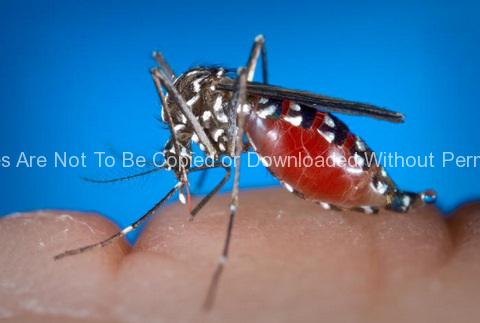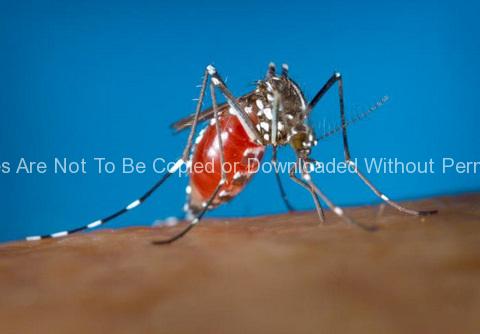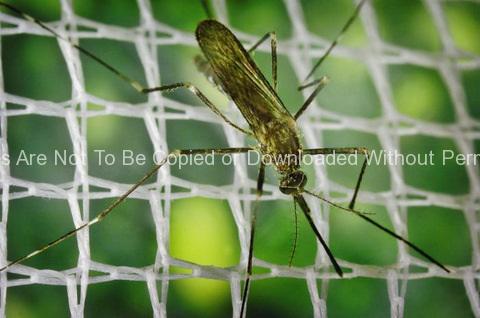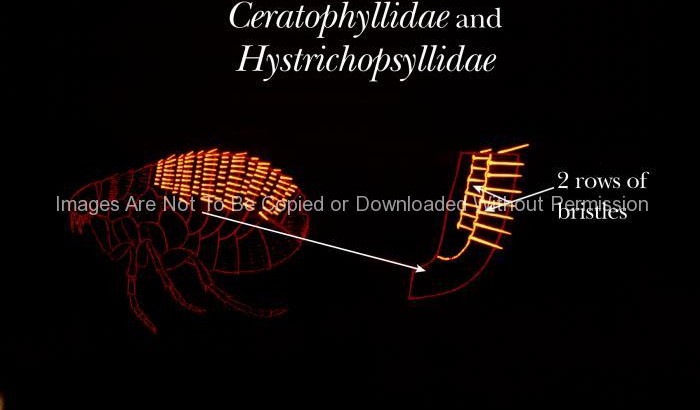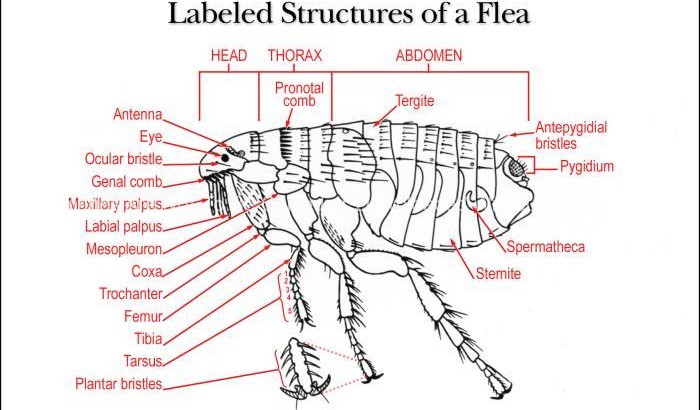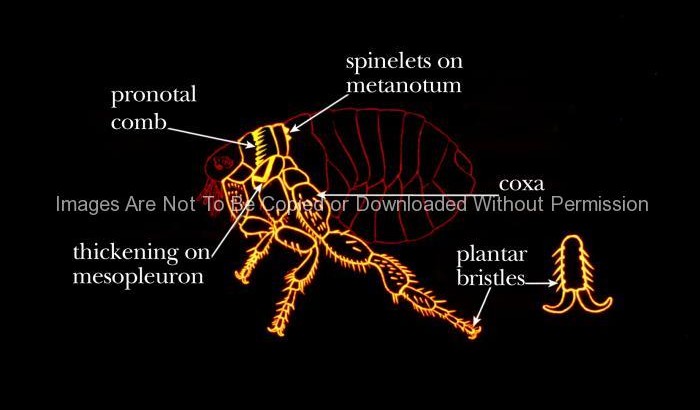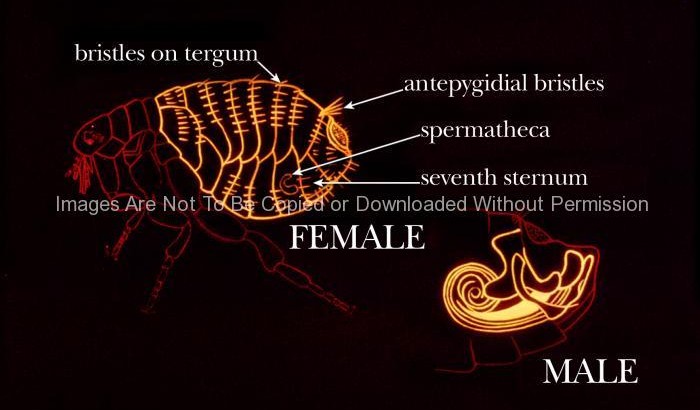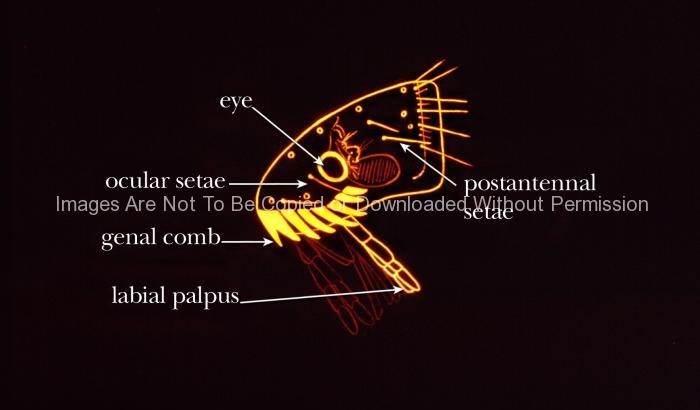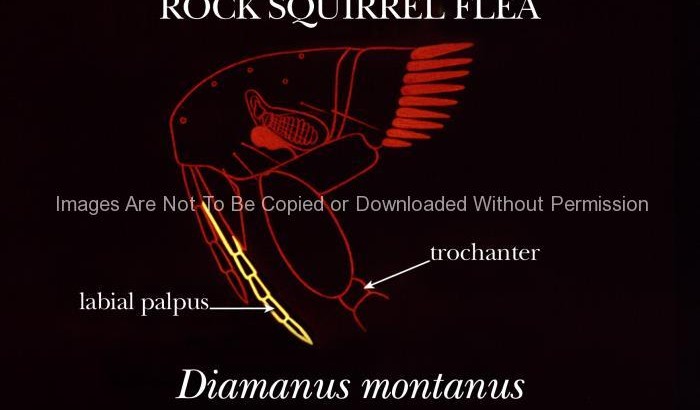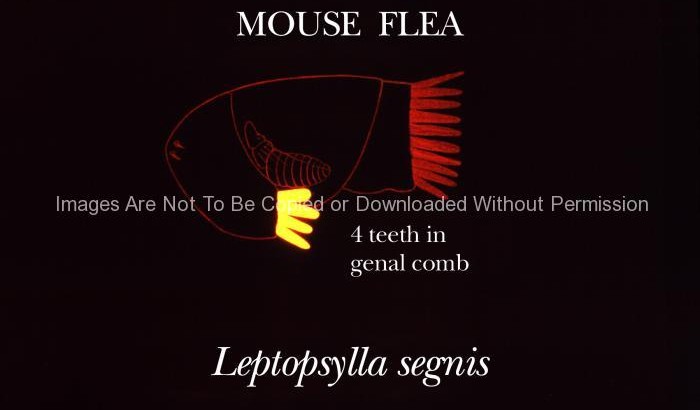The mosquito pictured here in this 2005 photograph, was until recently known as Aedes japonicus, and is now labeled Ochlerotatus japonicus. This particular specimen was a member of the Notre Dame colony. Oc. japonicus was initially collected in the United States in New York and New Jersey, in 1998.
The Ochlerotatus japonicus Notre Dame colony was established from specimens that had been collected as larvae, in water filled containers, i.e., flower pots and tires, in residential areas of South Bend, Indiana during the summer months of 2005. This mosquito is suspected of being a vector of the Japanese Encephalitis virus in Asia, and the West Nile in the United States. While Oc. japonicus has not been incriminated as a major vector of West Nile virus in the United States, it is nevertheless of concern to public health agencies because of its fairly rapid colonization of a large part of the north eastern and midwestern United States, and for its propensity to lay eggs in flooded containers found around human dwellings.
